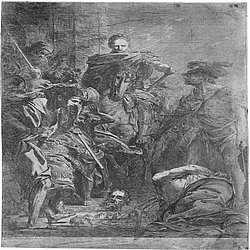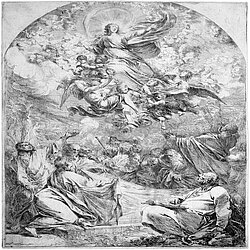Loading the page ...
Michael Willmann
1630 Königsberg – 1706 Kloster Leubus
Michael Lucas Leopold Willmann, who was called the “Silesian Apelles” during his lifetime, is best known as a painter and leading master of the German Baroque. In the course of his long and successful career he produced, together with his pupils and assistants, an oeuvre of over five hundred paintings, many of which have been preserved in churches, monasteries and museums in Poland, the Czech Republic, Austria and Germany. Taught initially by his father Peter, Willmann travelled at the age of around twenty to Amsterdam, where he was trained by Jacob de Backer and was greatly influenced by the work of Rembrandt. Given his aspirations to be an artist, he may well also have stayed in Antwerp, since there is no overlooking the stylistic inspiration of Rubens and van Dyck in his work. Having spent some two years in the Netherlands, Willmann travelled for an extended period. Among the cities he visited were Prague and Wroclaw, where he received his first commissions for the Leubus Monastery from the Cistercian Abbot Arnold Freiberger. Around 1657/58 Willmann was probably in Berlin, where he was appointed court painter to the Elector. A few years later he converted to Catholicism and married Helena Regina Lischka from Bohemia. Willmann found his final workplace in about 1660/61, settling in the Royal Cistercian Abbey in Leubus, where he remained for the rest of his days. Willmann had achieved such renown in the meantime that he and his workshop received numerous important commissions from aristocratic Silesian and Bohemian families and religious orders. He became the leading painter in Silesia; the dramatic pathos of his religious paintings and the technical virtuosity of their execution were to influence the style of painting for several generations to come. Willmann was also an outstanding draughtsman and gifted printmaker. His printed oeuvre is very limited, comprising eleven etchings in his own hand, mostly on biblical and religious themes, executed in a free and experimental technique that was remarkable for its time.
Archive

